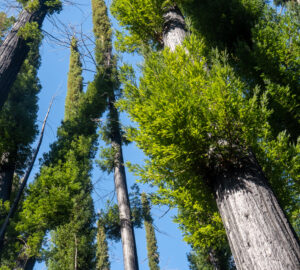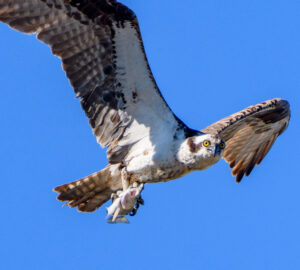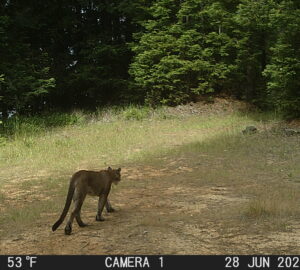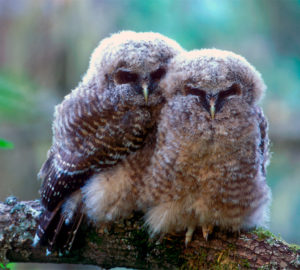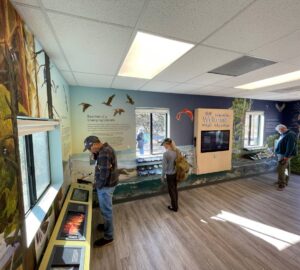A brief look at some of the fascinating species struggling to bounce back
As controversy erupted in recent months over the protected status of the northern spotted owl in the Pacific Northwest, it was another reminder that California’s coast redwood and giant sequoia forests play host to many threatened and endangered wildlife species. Why do imperiled species matter? Congress explains in the preamble to the Endangered Species Act (ESA) of 1973 that such wildlife and plants “are of esthetic, ecological, educational, historical, recreational, and scientific value to the Nation and its people.”
In the redwoods, human use of the forests drove most of these species to protected status. Now these animals help protect the forests they call home. The California and federal Endangered Species Acts call for habitat protection to help listed wildlife recover. The land protection and restoration efforts of Save the Redwoods League play a critical role in ensuring a future for these species.
Here are a few of the redwood forest wildlife species fighting to rebound:
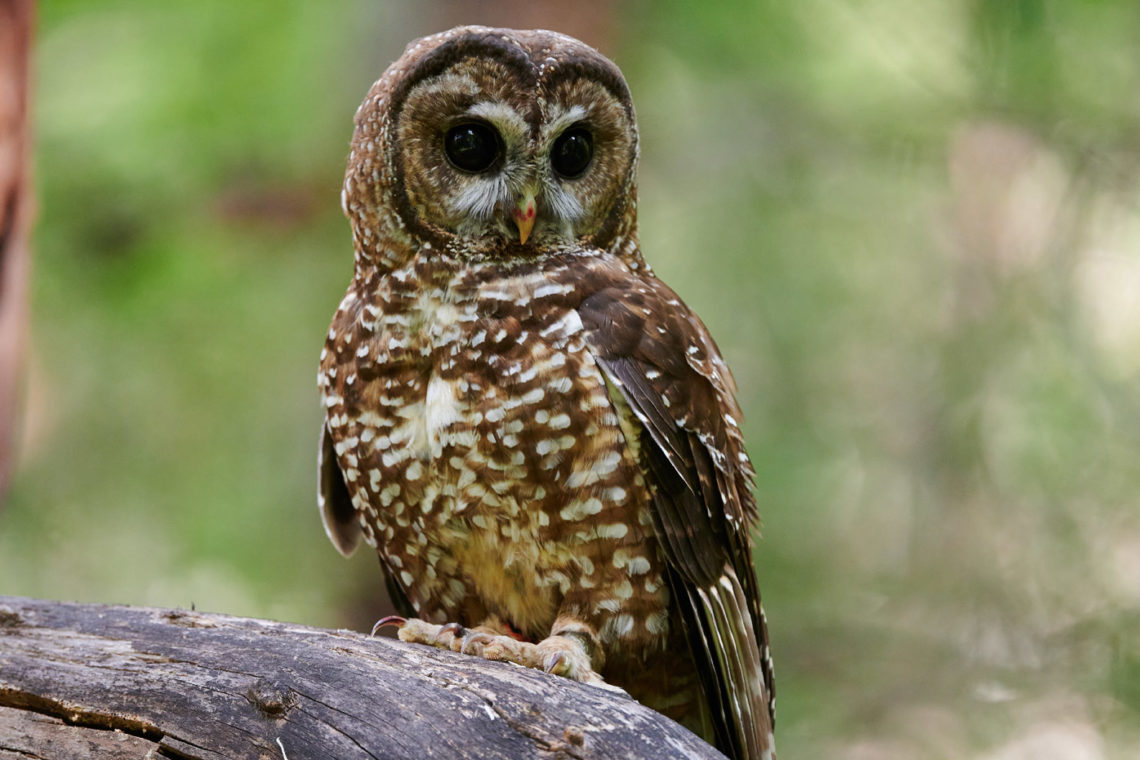
Northern spotted owl
The northern spotted owl has been a political and legal lightning rod since it was first listed as threatened under the federal Endangered Species Act in 1990 and subsequently added to the state list. The controversy belies its quiet nature. You could wander the redwoods for years and never see one of the medium-sized brown owls with signature oval white spots on its breast.
The owl’s listing has long been contested by logging and other commercial interests, and the battles took another turn late last year. In December, the U.S. Fish and Wildlife Service agreed that the northern spotted owl’s continued decline warranted elevating its listing from threatened to endangered, but nonetheless declined to do so. Then in January, the Service removed 3.5 million acres from the owl’s designated critical habitat. Expect more political and legal battles.
The bird is also losing ground to the larger barred owl, which has been slowly expanding its range.
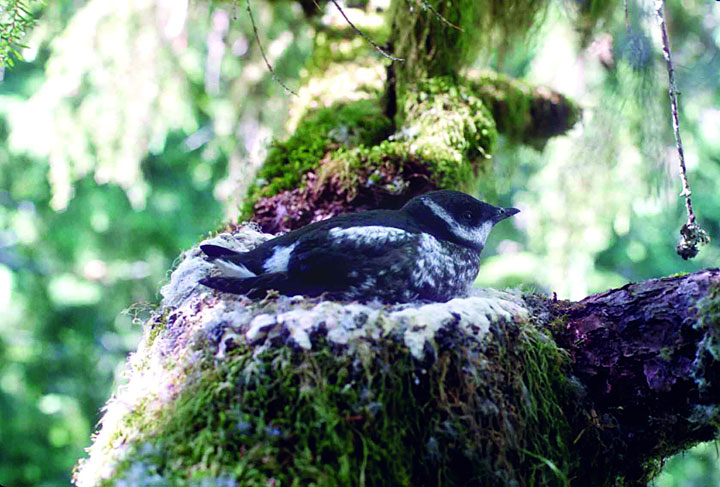
Marbled murrelet
The marbled murrelet is a brown-and-white seabird that’s a little bigger than a robin. The bird became popular among naturalists in the 19th century for the mystery around its nesting habits—no one had ever seen a chick. Finally, in 1974, a tree-trimmer stumbled on one in Big Basin Redwoods State Park in the Santa Cruz Mountains. Amazingly, this bird that spends almost its entire life on the ocean eating fish nests high in trees.
The historical loss of old-growth forests has prompted steep declines in marbled murrelets, resulting in protected status under the federal and state ESA. In addition to protecting the birds’ habitat, the League frequently times its restoration projects in the redwoods around marbled murrelet breeding season. The League also has supported research showing that another threat to the murrelets is in parks where food is left behind by visitors, attracting jays, ravens, and crows, which then attack the seabirds’ nests.
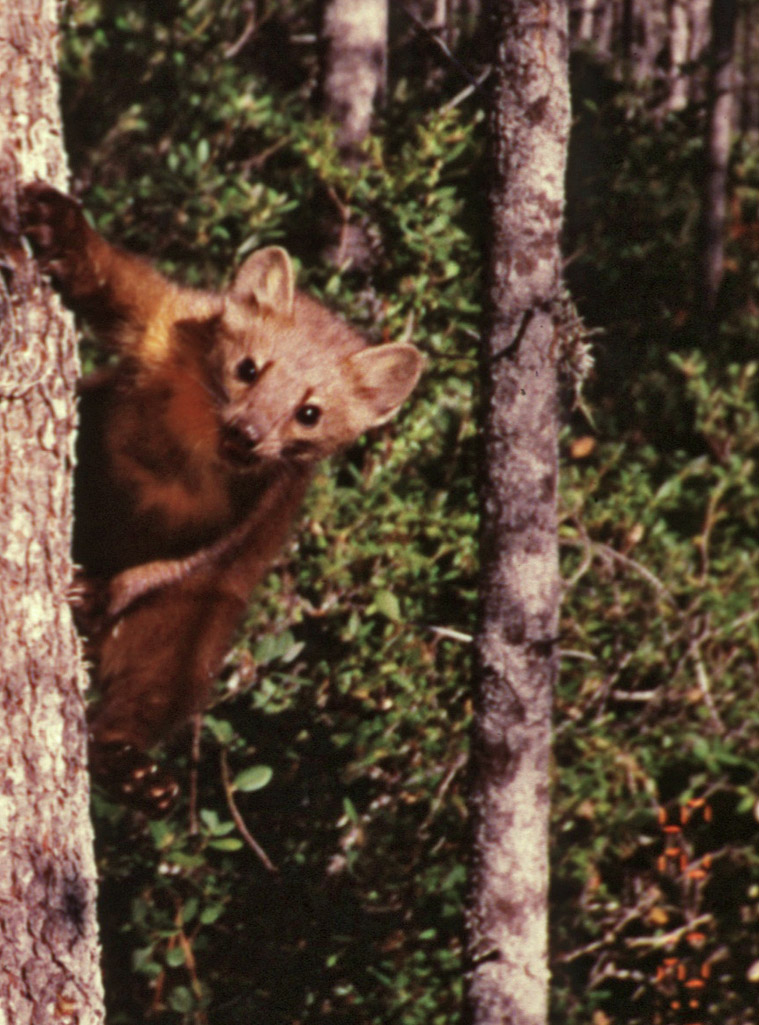
Humboldt marten
A recent addition to the federal list is the coastal Distinct Population Segment of the Pacific marten, also known as the coastal marten or Humboldt marten. This secretive, cat-sized mammal in the weasel family lives in coastal Oregon and northern coastal California. It requires mature, structurally complex forest stands with a dense understory, and does well in the old-growth redwoods of the Northern California coast, which Save the Redwoods League has long worked to protect. These mammals have lost more than 90% of their historical range due to wildfire and logging.
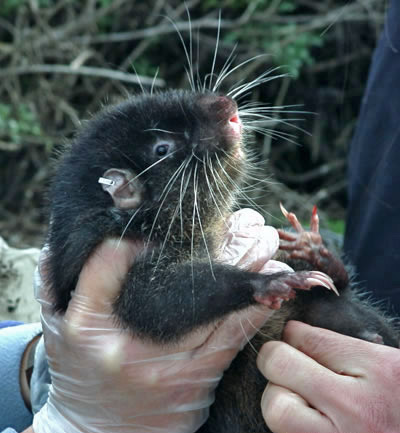
Point Arena Mountain Beaver
Listed as federally endangered since 1991, the Point Arena mountain beaver spends most of its life in burrows. About a foot long, this subspecies is only found within a 24-square-mile area in western Mendocino County. They are neither true aquatic beavers, nor do they live in the mountains. Among the habitats it enjoys are streamside strips adjacent to redwood forests dominated by alder and swordfern. Threats include habitat loss and fragmentation due to development, roads, and farming.
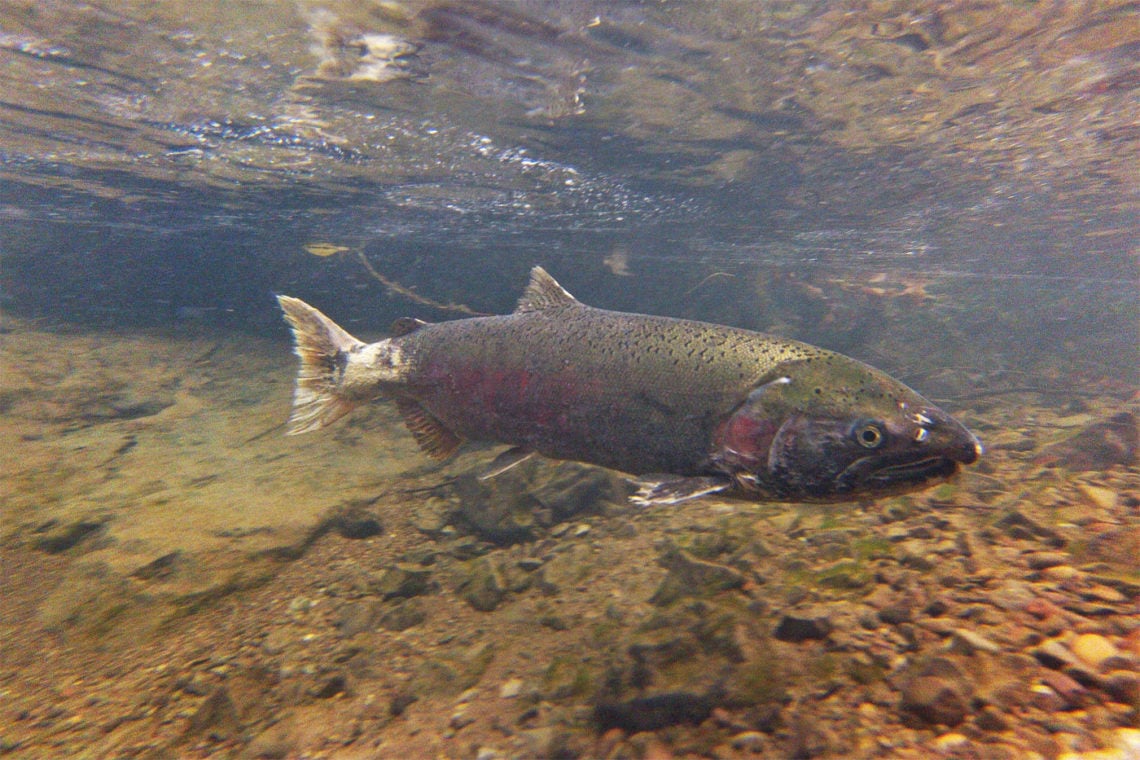
Coho and Chinook salmon
Coho and Chinook are two subspecies of Pacific salmon that have been struggling with declining populations throughout California, including the rivers and streams in the northern redwood forests. They are listed as threatened under the federal and state ESA. Damming of rivers for power generation, sediment run-off from logging roads, and water diversion have all contributed greatly to their decline. Given the relationship between healthy salmon populations and healthy redwood forests, the League has long incorporated stream restoration in our forest restoration work.
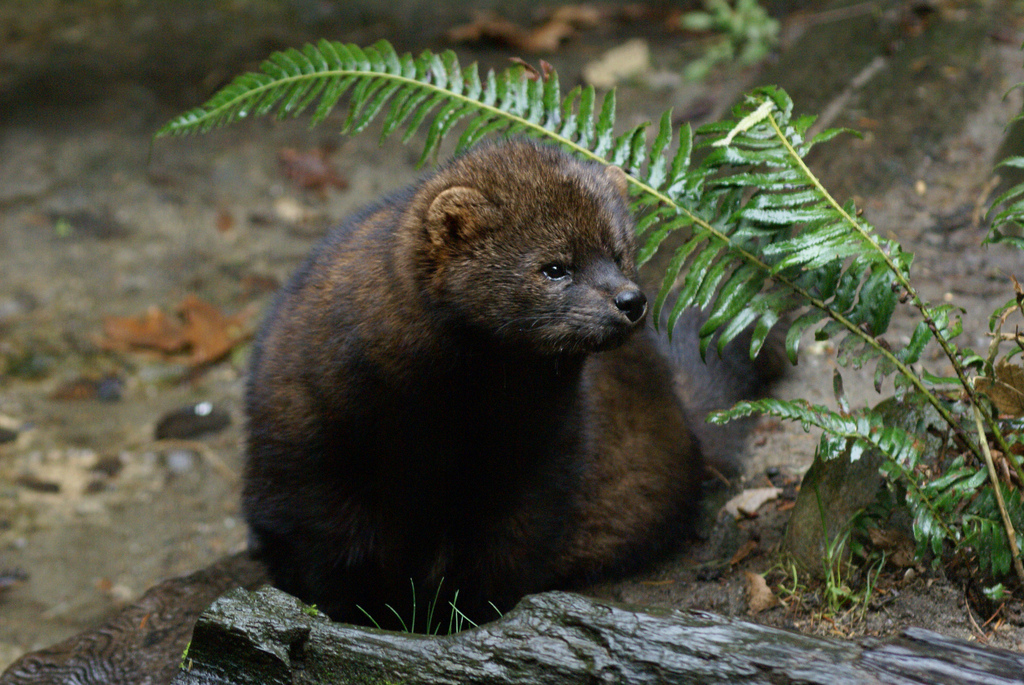
Pacific fisher
Another recent addition to the federal ESA list is the Southern Sierra Nevada Distinct Population Segment of Pacific fisher, which is also listed under the California ESA. These nocturnal mammals are midsized carnivores in the weasel family. They are excellent tree climbers and have a varied diet of small mammals and birds. Unfortunately, fisher populations have declined because of habitat loss from tree mortality, wildfires and logging, among other factors. We were pleased to catch a photo of a Pacific fisher on a camera trap at our Red Hill giant sequoia property last year.
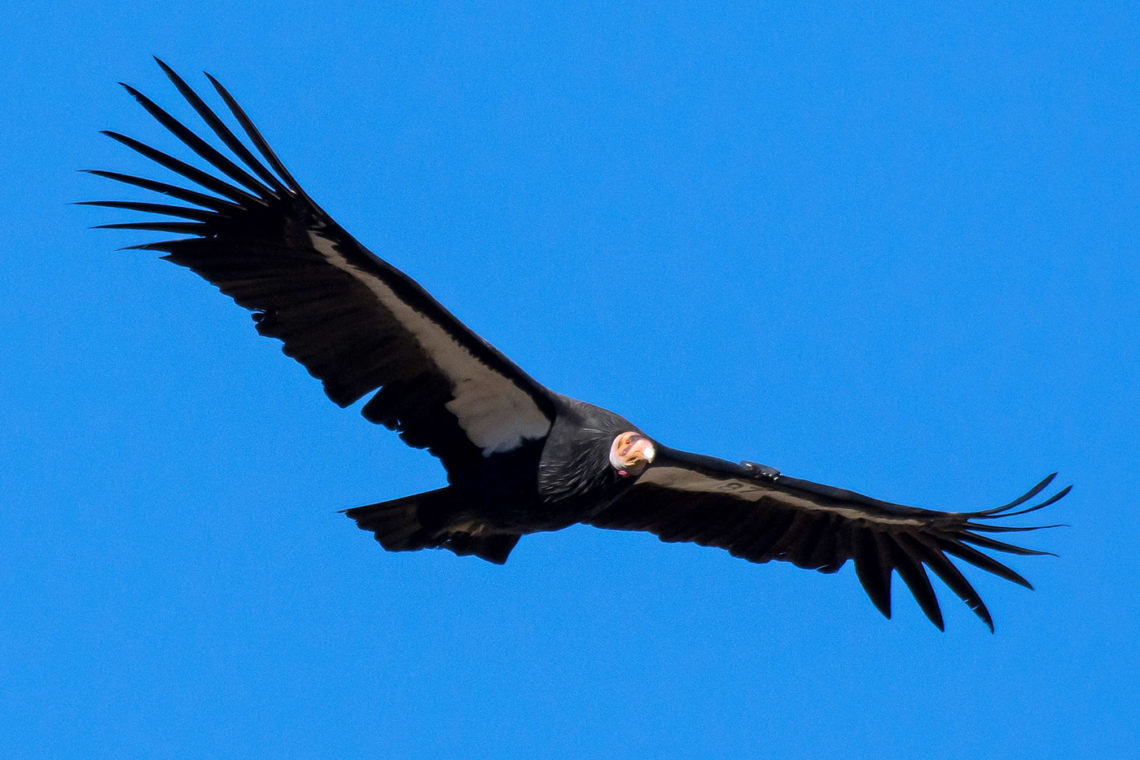
California condor
The California condor was one of the first species afforded protection under the federal ESA, and its emergence from the brink of extinction is one of the law’s greatest achievements. The largest bird in North America, the condor’s wingspan can reach 9 feet or greater, enabling it to soar for hours without flapping its wings. It likes to nest in tall trees and cliffs.
Forty thousand years ago, condors soared across North America, but now their range is limited to areas of California, Mexico, Arizona, Nevada, and Utah. In California, the bird moves along the Central Coast and then eastward across the Transverse Ranges. Already a frequent visitor in the coast redwoods of Big Sur, the California condor is now pushing into the giant sequoia of the southern Sierra Nevada.
Although the birds have long been absent from the Pacific Northwest, the Yurok Tribe is poised to reintroduce the condor to Northern California.
This feature appears in the beautiful printed edition of Redwoods magazine, a showcase of redwoods conservation stories by leading scientists and writers, as well as breathtaking photos, and ways you can help the forest.
Join our thousands of members today for only $25, and you’ll get future editions of our Redwoods magazine.

